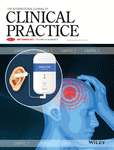How accurate is radiological imaging for perirenal fat and renal vein invasion in renal cell carcinoma?
Abstract
Objective
To evaluate the accuracy of radiological staging, especially renal venous and perirenal fat invasion, in renal cell carcinoma (RCC).
Material and Methods
Data of 4823 renal tumour patients from Renal Tumor Database of Association of Uro-oncology in Turkey were evaluated. Of 4823 patients, 3309 RCC patients had complete radiological, and histopathological data were included to this study. The Pearson chi-squared test (χ2) was used to compare radiological and histopathological stages.
Results
The mean (SD) age of 3309 patients was 58 (12.3). Preoperative radiological imaging was performed using computed tomography (CT) (n = 2510, 75.8%) or magnetic resonance imaging (MRI) (n = 799, 24.2%). There was a substantial concordance between radiological and pathological staging (к = 0.52, P < .001). Sensitivities of radiological staging in stages I, II, III and IV were 90.7%, 67.3%, 27.7% and 64.2%, respectively. The sensitivity in stage III was lower than the other stages. Subanalysis of stage IIIa cases revealed that, for perirenal fat invasion and renal vein invasion, sensitivity values were 15.4% and 11.3%, respectively.
Conclusions
There was a substantial concordance between radiological (CT and/or MRI) and pathological T staging in RCC. However, this is not true for T3 cases. Sensitivity of preoperative radiological imaging in patients with pT3a tumours is insufficient and lower than the other stages. Consequently, preoperative imaging in patients with T3 RCC has to be improved, in order to better inform the patients regarding prognosis of their disease.
DISCLOSURES
There are no conflicts of interest to be stated for the corresponding author and all co-authors.
Open Research
DATA AVAILABILITY STATEMENT
Data available on request from the authors.




